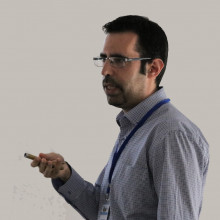
Aggelos Philippidis received his Doctorate degree from Chemistry Department, University of Crete, Greece, in 2009. His thesis was on the study of molecular compounds metal-chalcogenides: Synthesis, Characterization and study of their solution chemistry. He received his master degree from the same department, in 2003. At that period he has investigated the geographical and botanical classification of Greek extra virgin olive oil by NMR spectroscopy and chemometrics. He received his B.Sc. degree from the same department, in 2001. He is currently performing his post-doctoral studies at IESL-FORTH Crete, Greece. During his post-doctoral research he has focused on the development of a prototype Raman system for the analysis of art works and cultural heritage objects. He has long experience on the use of spectroscopic methods (Raman/SERS, FT-IR, Fluorescence spectroscopies) coupled to chemometrics tools, in relation to analysis of heritage materials and food products (wine, olive oil etc). He has published 43 articles in international refereed journals with more than 1370 citations and h-index 18 (Google Scholar). He has also 29 presentations in international conferences and he has actively participated in a number of national and international research funding projects. He has also teaching experience, as teaching personnel at Dept. of Materials Science and Engineering, Univ. of Crete, 2018-2020 and at Biomedical Engineering MSc Program, Univ. of Crete, Technical University of Crete, Foundation for Research and Technology-Hellas, 2020-2022.
Education
- 2009, PhD, Chemistry Department, Univ. of Crete, Greece
- 2003, MSc. Chemistry Department, Univ. of Crete, Greece
- 1996, BSc, Chemistry Department, Univ. of Crete, Greece
Career
- 2009-today, Post-doctoral researcher, IESL-FORTH
Interests
- Spectroscopic analytical methods in the field of culture heritage and agro-foods.
- Methodology and instrumentation Raman micro-spectroscopy.
- Surface Enhanced Raman Scattering (SERS)
- Development of portable Raman spectrometer


